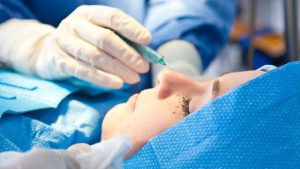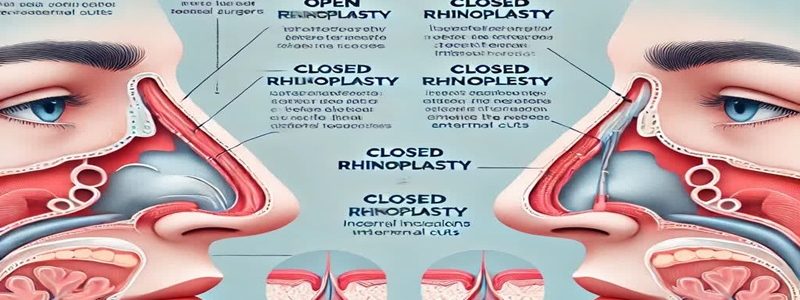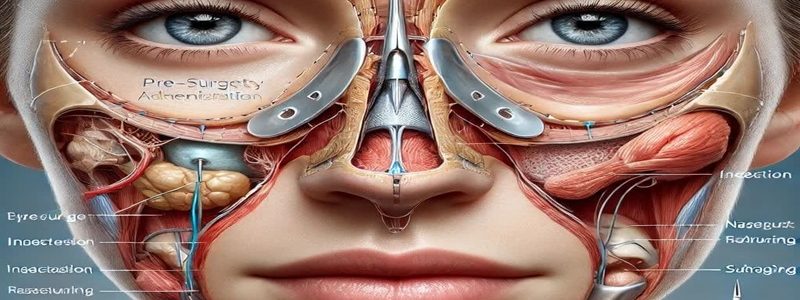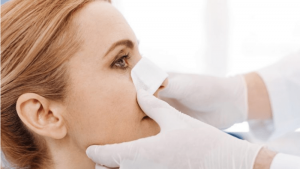Possible impacts and changes
Introduction
rhinoplasty (رینوپلاستی) Is one of the most popular cosmetic acts in the world. Different people do this surgery for aesthetic or functional reasons, such as breathing improvement. While many patients are satisfied with their initial results, one of the common questions is whether these results will be stable in the long run..
The results of nasal surgery are usually permanent, but that does not mean that the nose will not change over time.. In this article from the site of Dr. Behnam Khorrami (Isfahan nose surgeon _ Jaw surgeon of Isfahan)Examine the factors that can affect the long -term results of nasal surgery, potential changes after years, and solutions to maintain the results..
Factors Affecting the Long Terms of Nasal Surgery
1.. Surgeon
One of the most important factors that affect the stability of nasal surgery is the techniques used by the surgeon.. Surgeons who have high experience and skill can prevent unwanted changes in the future by sustainable structural design.. Select between methods Open or closed rhinoplasty It can also affect the stability of the outcome.
2.. کیفیت و نوع پوست بیمار
ضخامت و نوع پوست نیز نقش مهمی در نتایج نهایی دارد. افرادی که پوست ضخیمتری دارند، ممکن است بعد از جراحی تغییرات کمتری در بینی خود مشاهده کنند، اما در برخی موارد، تورم بعد از عمل طولانیتر باقی میماند. از طرف دیگر، پوستهای نازک جزئیات ساختار بینی را بهتر نشان میدهند، اما ممکن است نسبت به تغییرات کوچک نیز حساستر باشند.
۳. روند بهبود و تغییرات طبیعی بدن
پس از جراحی، روند ترمیم طبیعی بدن آغاز میشود. در ماههای اول، تورم و التهاب به تدریج کاهش مییابد. اما ممکن است بینی در سالهای بعد نیز تغییرات جزئی داشته باشد، بهخصوص اگر بدن تمایل به ایجاد بافت اسکار یا تغییرات در بافتهای نرم داشته باشد.
4.. عوامل محیطی و سبک زندگی
عوامل خارجی مانند قرارگیری در معرض آفتاب، سیگار کشیدن، و تغذیه نامناسب میتوانند بر سلامت پوست و بافتهای بینی تأثیر بگذارند. مراقبت مناسب از پوست و پرهیز از عادات مضر میتواند به حفظ نتایج کمک کند.
5. افزایش سن و تغییرات ساختاری
مانند هر بخش دیگر از بدن، بینی نیز با افزایش سن دچار تغییراتی میشود. با گذشت زمان، بافتهای نرم ممکن است تحلیل بروند و غضروفها کمی تغییر شکل دهند. این فرایند طبیعی میتواند باعث شود نوک بینی اندکی افت کند یا تغییراتی جزئی در ساختار کلی بینی ایجاد شود.
تغییرات احتمالی در بلندمدت
1.. کاهش تورم و تثبیت شکل بینی:
طی سال اول پس از جراحی، بیشتر تورم کاهش مییابد و نتیجه نهایی آشکار میشود.
2.. ایجاد بافت اسکار داخلی:
در برخی بیماران، Oscar texture ممکن است در داخل بینی شکل بگیرد و تغییرات جزئی در فرم ایجاد کند.
3.افتادگی یا تغییر فرم نوک بینی:
اگر ساختار غضروفی بینی به درستی تقویت نشده باشد، ممکن است نوک بینی در طول زمان کمی افت کند.
4.. تغییرات ناشی از افزایش سن:
با افزایش سن، پوست خاصیت ارتجاعی خود را از دست میدهد و ممکن است روی شکل بینی تأثیر بگذارد.
5. آسیبهای احتمالی:
ضربه یا آسیب فیزیکی به بینی میتواند باعث تغییر در فرم بینی شود.
راهکارهای حفظ نتایج بلندمدت جراحی بینی
1.. Choosing a skilled surgeon
جراحی که تجربه و تخصص کافی داشته باشد، میتواند ساختاری پایدار ایجاد کند که در طولانیمدت تغییرات کمتری داشته باشد.
2.. Post-surgery care
پیروی از توصیههای پزشک، مانند استفاده از چسب بینی و پرهیز از فعالیتهای شدید، به بهبود بهتر کمک میکند.
۳. محافظت از بینی در برابر آسیبها
اجتناب از ورزشهای تماسی یا فعالیتهایی که ممکن است به بینی آسیب بزنند، در حفظ نتیجه مؤثر است.
4.. تغذیه و سبک زندگی سالم
مصرف مواد مغذی مانند ویتامین C و پروتئین میتواند به بهبود بافتها و سلامت کلی بینی کمک کند.
5. استفاده از ضدآفتاب
قرار گرفتن در معرض آفتاب بدون محافظت میتواند باعث تغییر رنگ و افتادگی پوست شود، بنابراین استفاده از کرم ضدآفتاب توصیه میشود.
Conclusion
نتایج جراحی بینی معمولاً دائمی هستند، اما ممکن است با گذشت زمان تغییرات جزئی در فرم و ساختار آن رخ دهد. انتخاب جراح مناسب، مراقبتهای پس از عمل، و داشتن سبک زندگی سالم میتواند به حفظ نتایج بلندمدت کمک کند. در صورتی که تغییرات ناخواسته در بینی ایجاد شود، امکان انجام جراحی ترمیمی بینی نیز وجود دارد.
Useful links:
Isfahan nose surgeon _ Jaw surgeon of Isfahan
Dr. Behnam Khorrami's page in the clinic 24 | Maxillofacial surgeon in Isfahan clinic 24 | Nose surgeon in Isfahan clinic 24
Dr. Behnam Khorrami, nose surgeon in Isfahan at Dr. Af | Maxillofacial surgeon in Isfahan at Dr. Af | Isfahan nose surgeon at Dr. Af



















